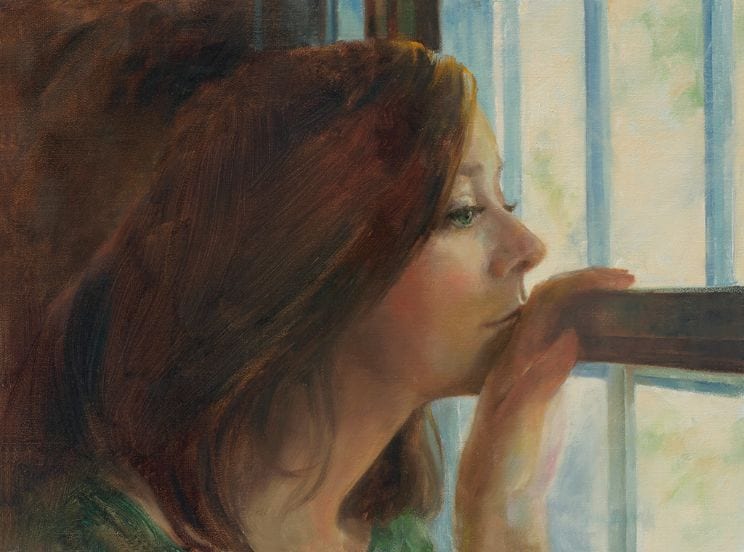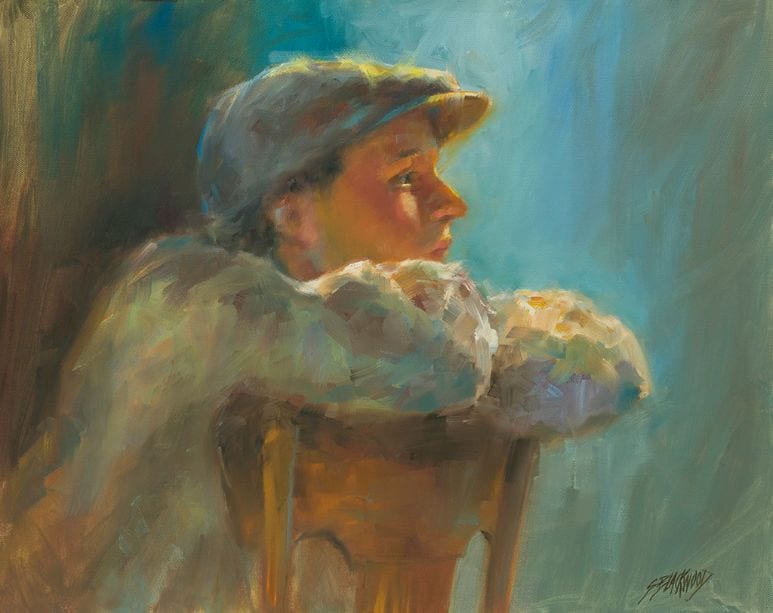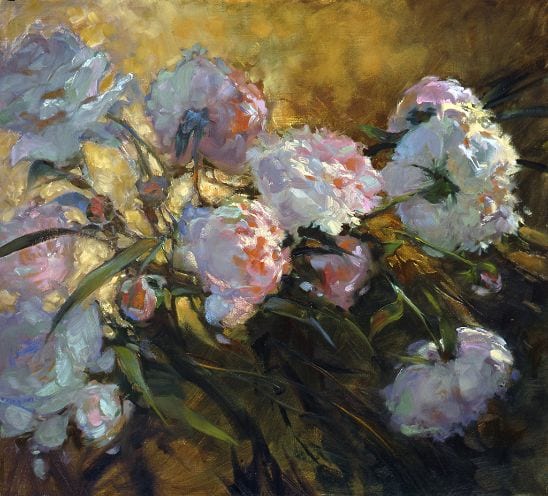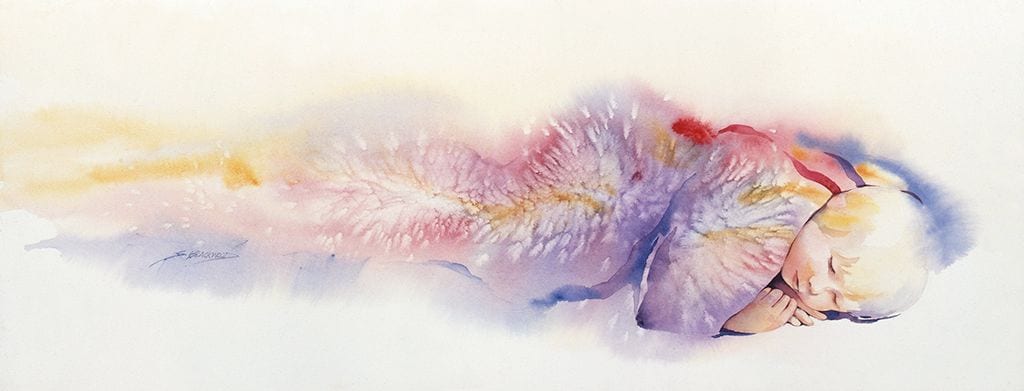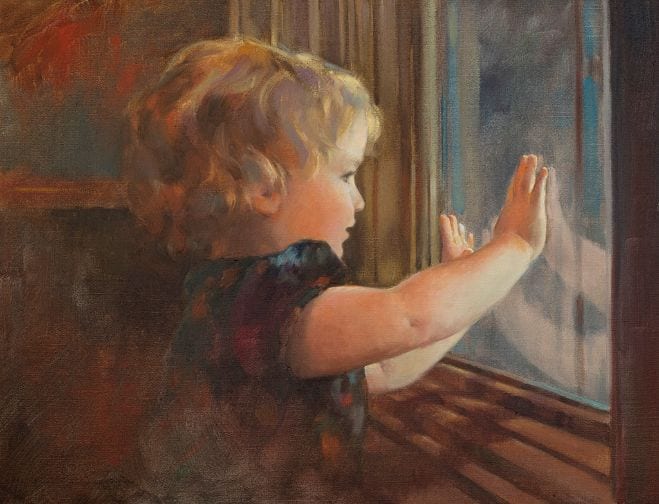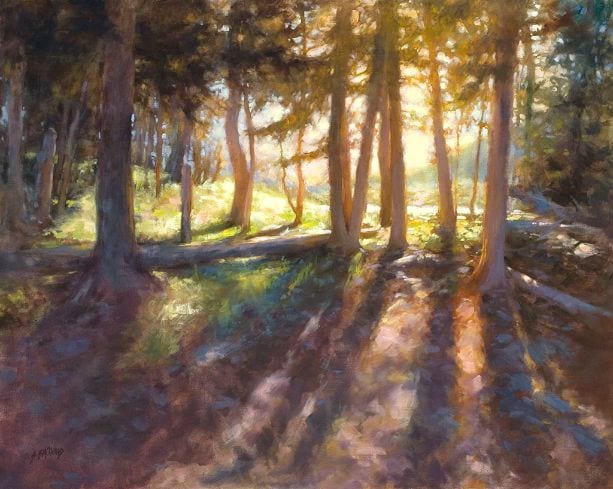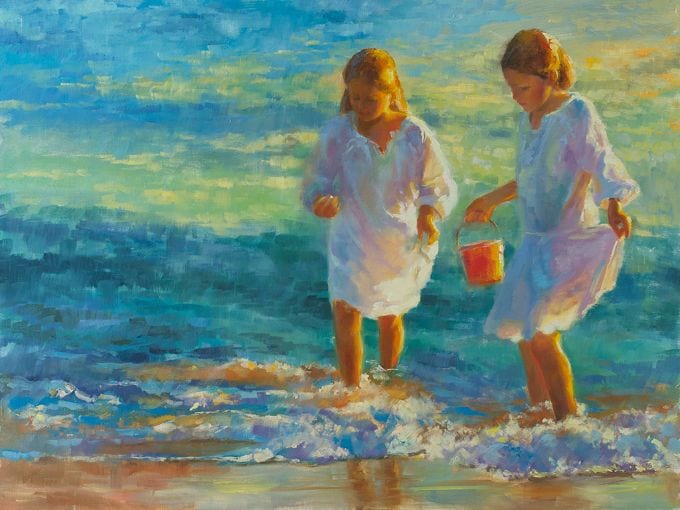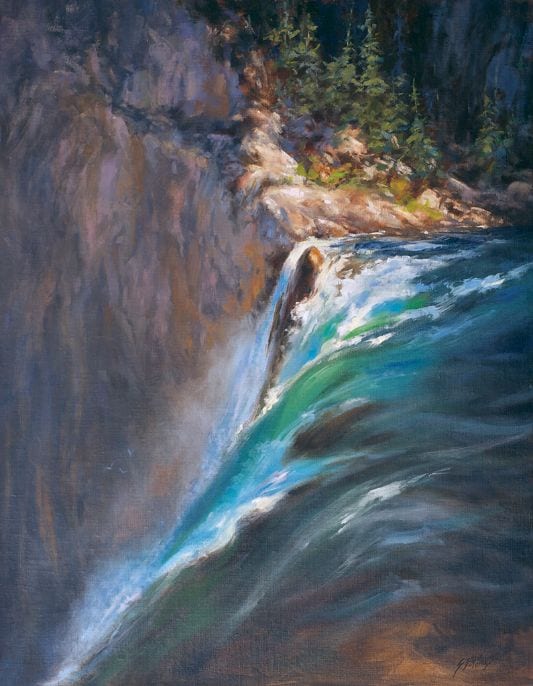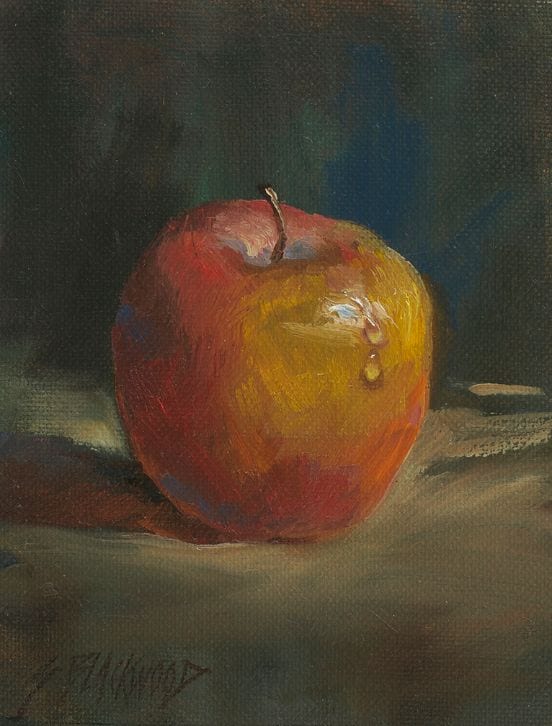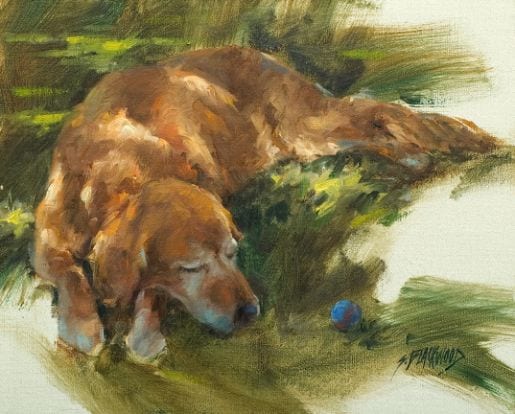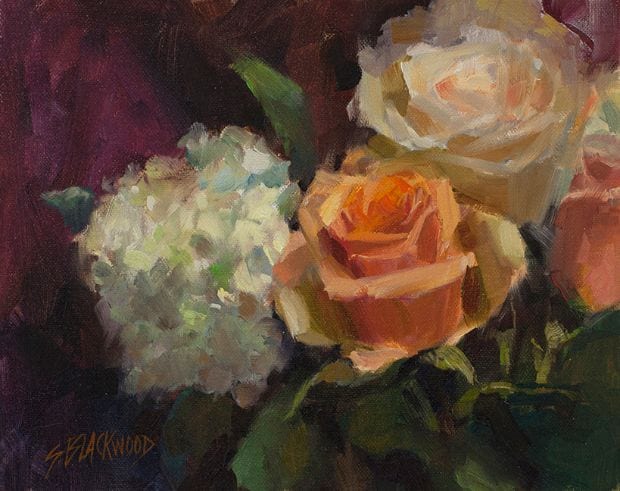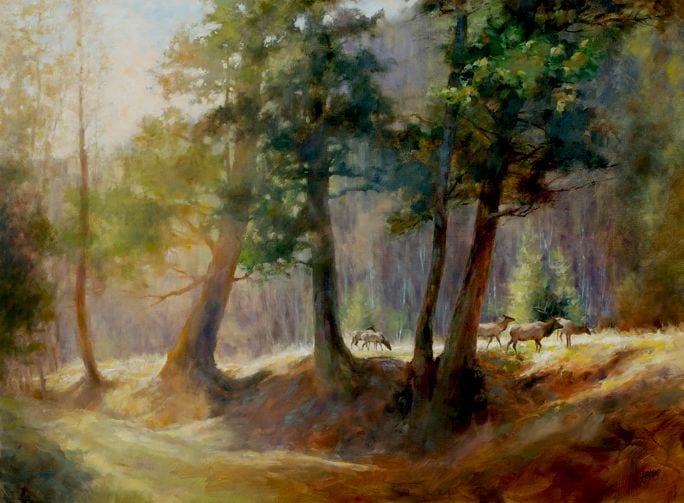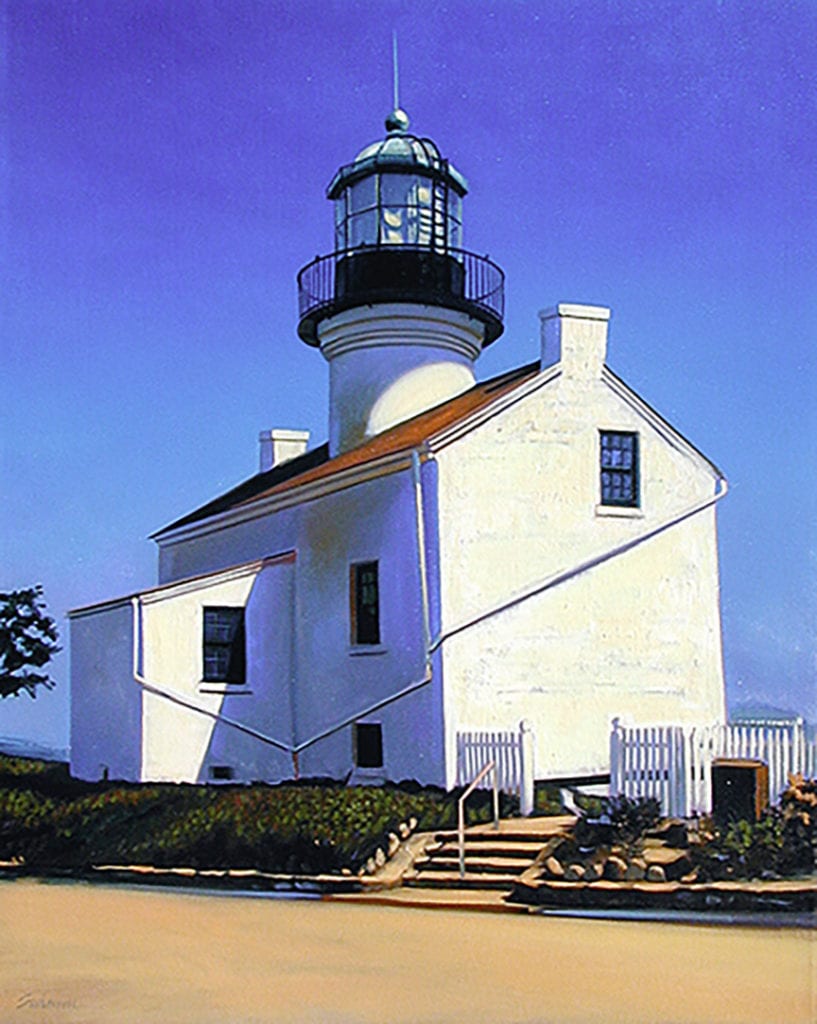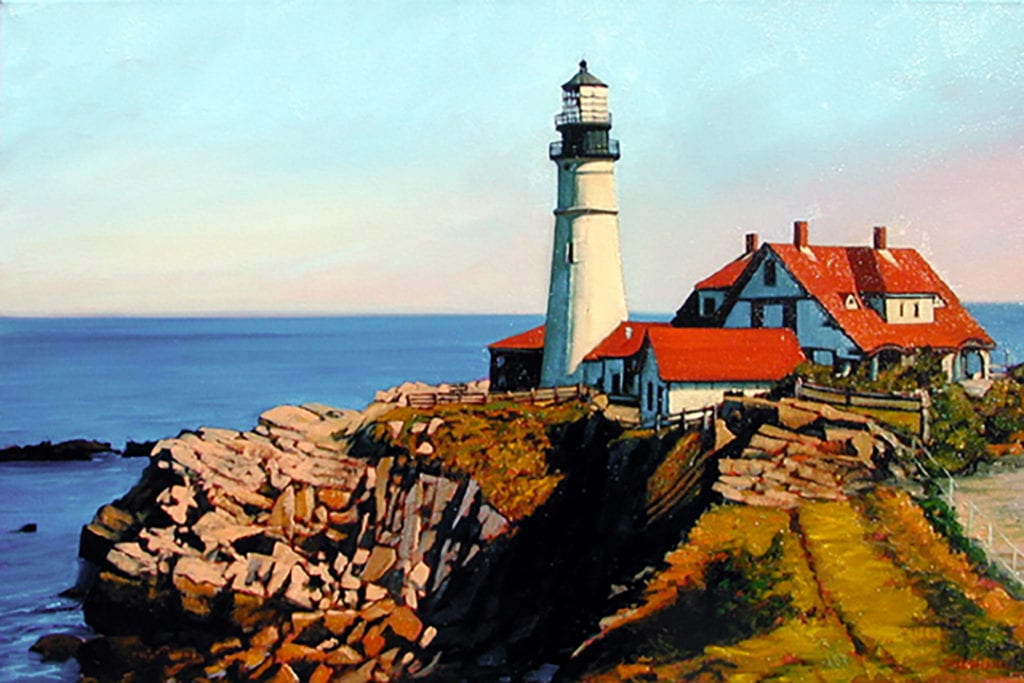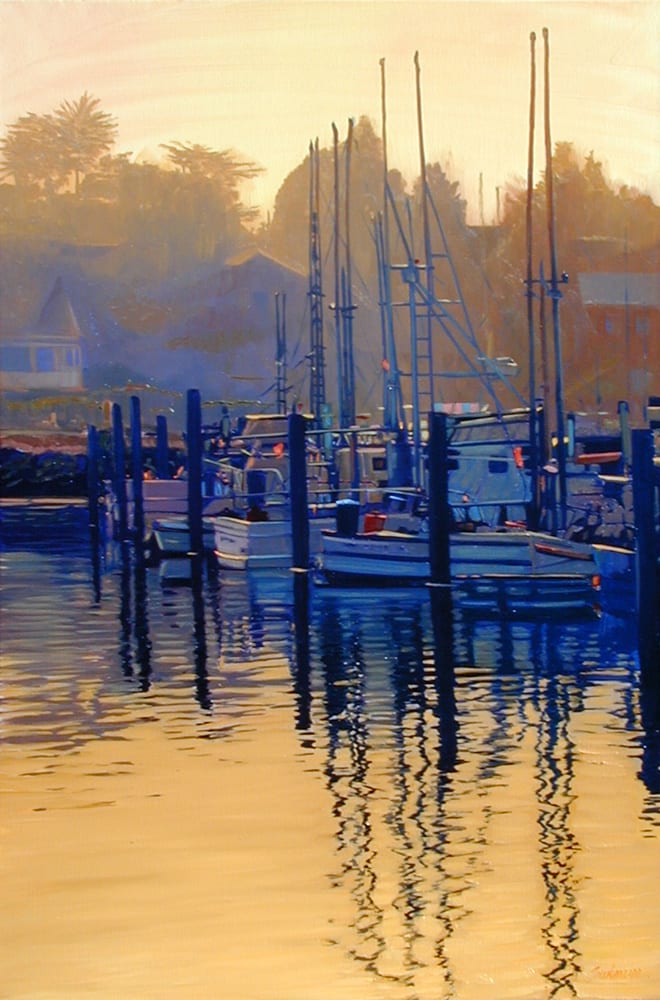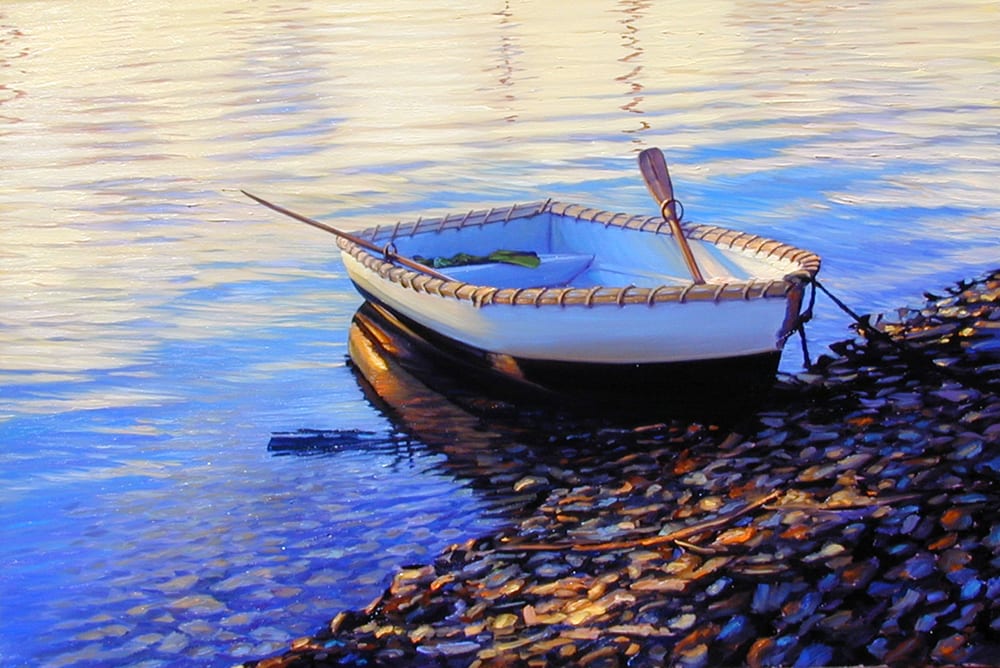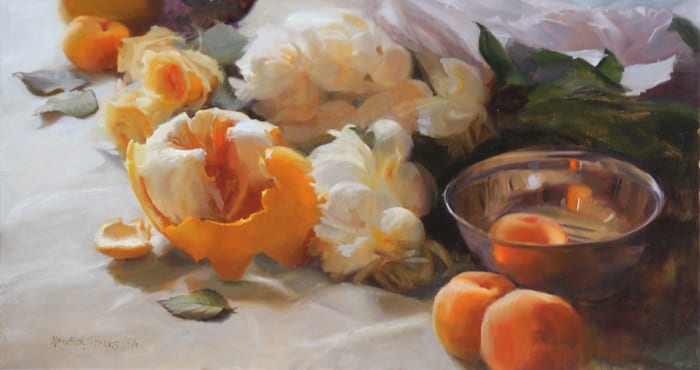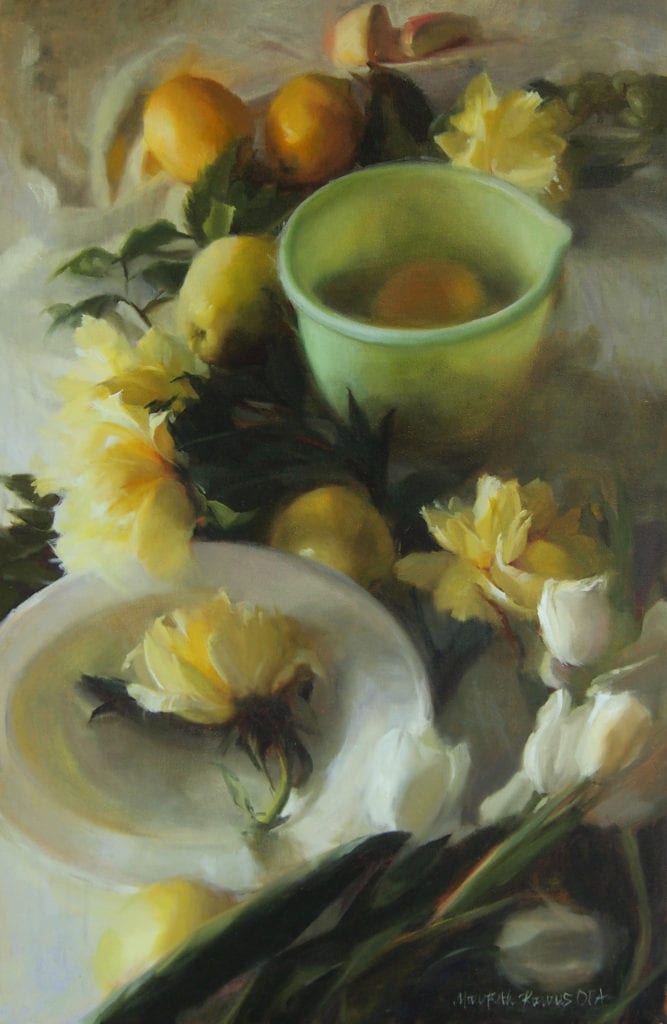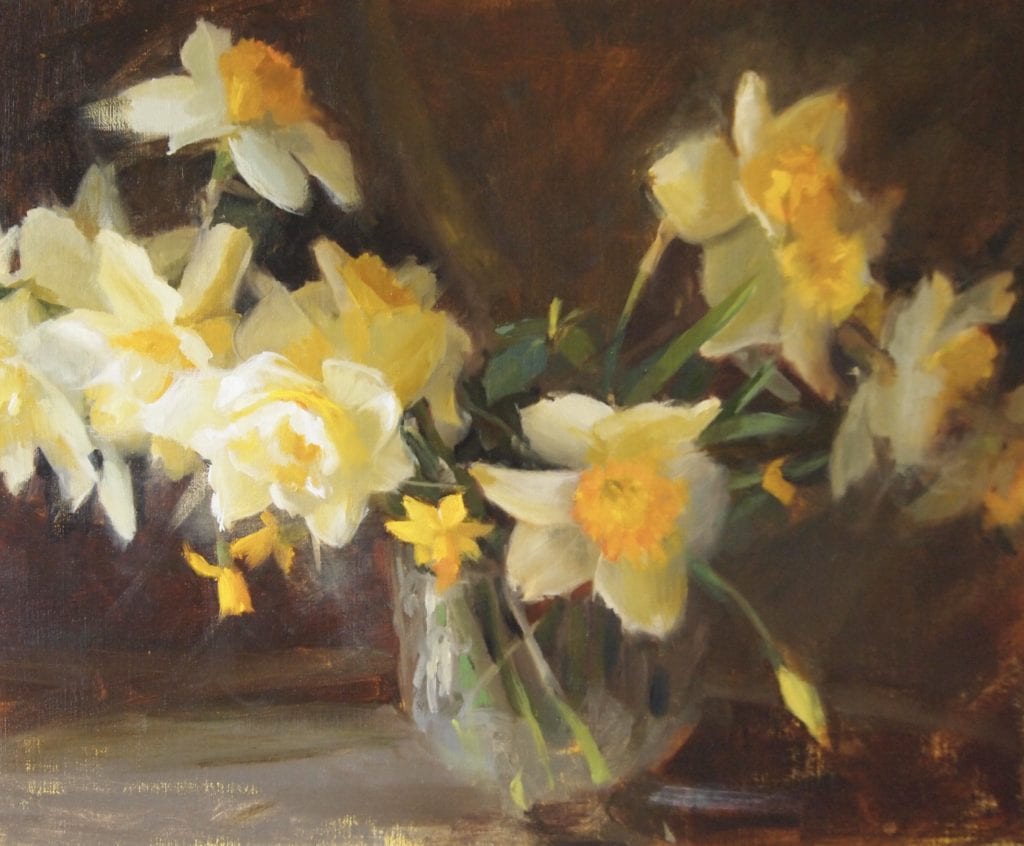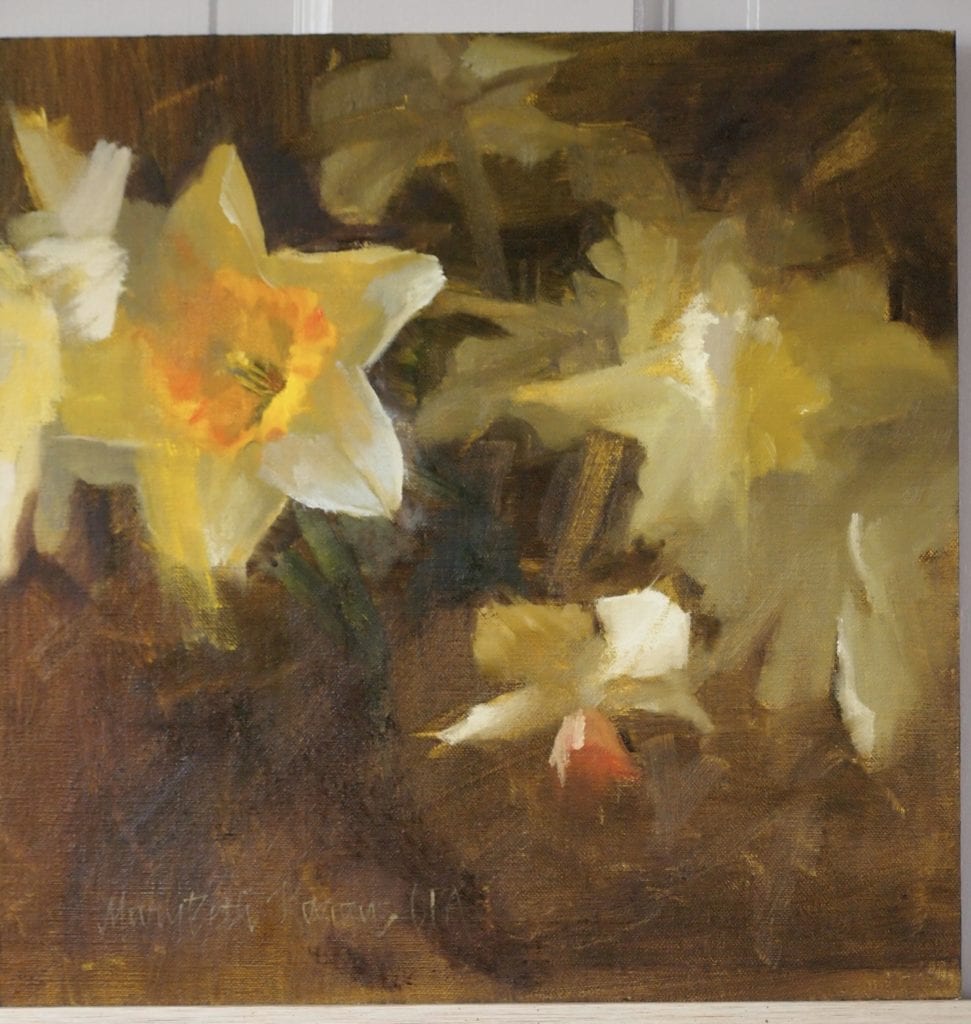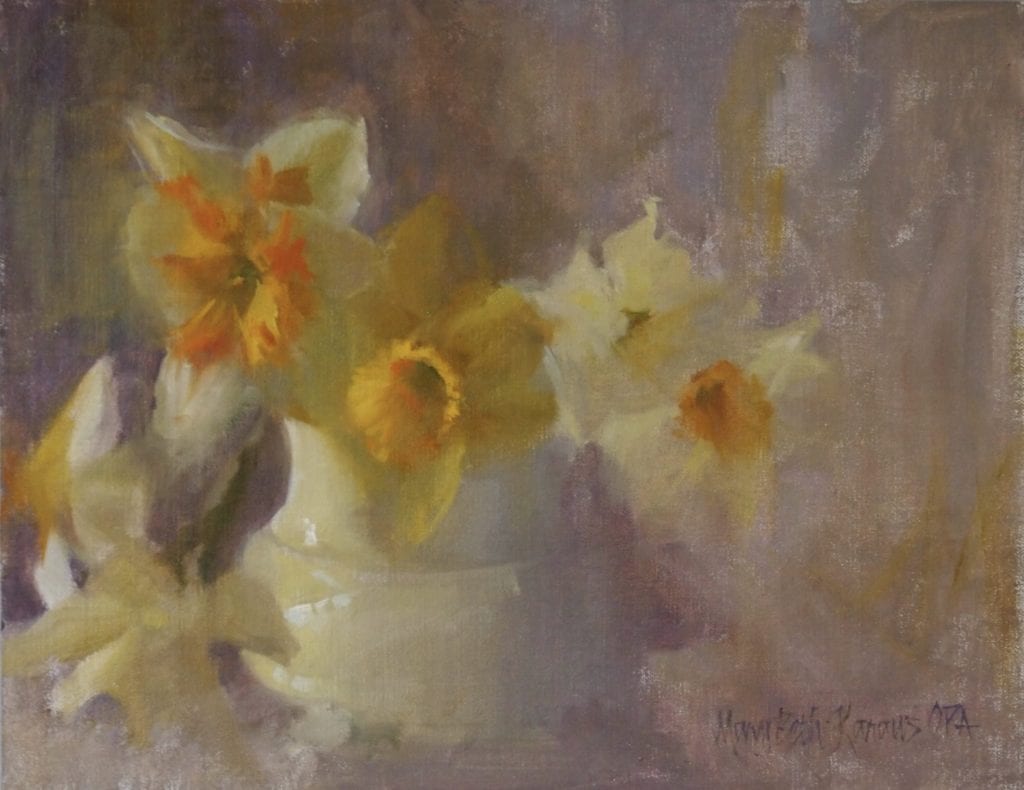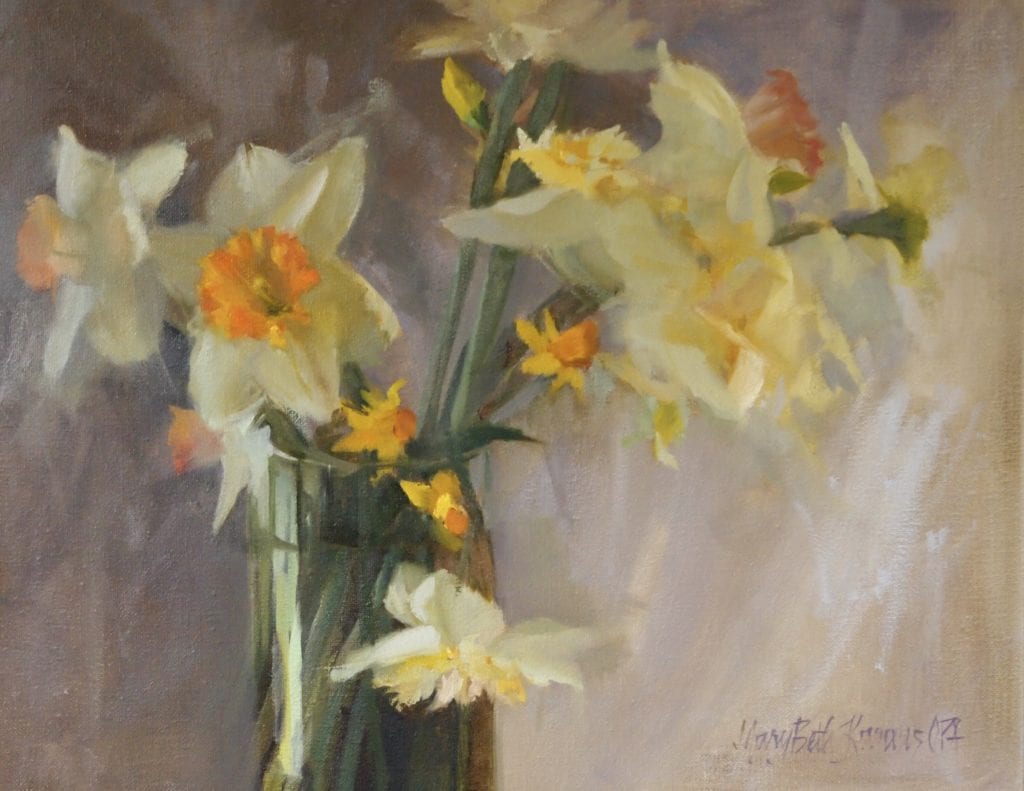Question: Hey Albert, I watched you demonstrate and I was amazed, are you getting abstract or what?
Well that’s a good question. Sometimes I wonder myself. I always had a good feeling for the design and shapes that make up the composition, I’m not trying to “go abstract,” not at all, I love realism and it’s liveliness!
I do try to paint the feelings I perceive as I hike through the woods, not the woods literally. Also, I find when I pan in on part of a rock face which is out of “context”, unpredictable as a subject, variations of shapes and colors become most prominent. Etc.
When I was 19 at the Art Students League, NYC, and painted portraits, I stood further back in the studio so I couldn’t see the highlights in the eyes but I could see the transition of colors and values from the top of the forehead to the bottom of the chin. I would go after the shapes of the lights and darks and the progression of light as it progressed throughout the entire portrait at the same time as I achieved a likeness.
With that subject everyone knew I was painting a portrait. Not so when panning in on part of a rock face, that could be anything. It is not “predictable” as a portrait is. Therefore it lends itself to being whatever.
Then again when painting mountain streams and trees, two of my favorite subjects, it brings in other questions. I am particularly excited by the energy of the moving water as the water moves forever finding its level. Same with the sense of delicate leaves when painting a group of trees. I have found exacting measuring for these two subjects does not work for me. Well, what does? I prefer to emphasize the moving energy of the water and the sense of flutter for my leaves. I view and paint both of them as rhythms rather than freezing them in time. This may be considered “abstract” or even unfinished?
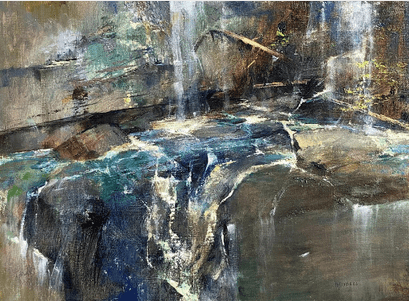
22″ x 24″ – Oil
Painted in the studio from a photographic reference
This painting is about the energy of water, painted primarily by the movements (rhythms) of the water rather than the exactitude of the photo.
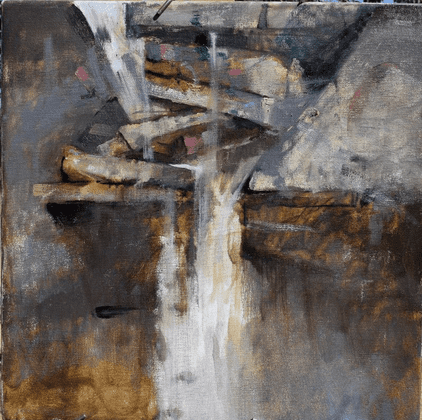
22″ x 22″ – Oil
This is a one day painting (it is a block in). It is so alive (my opinion) I decided to leave it alone.
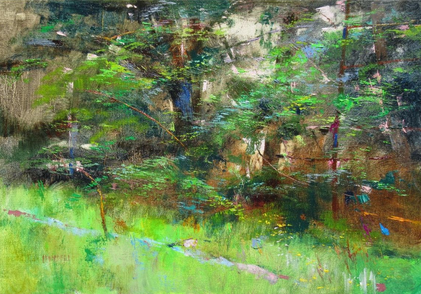
18″ x 26″ – Oil
After blocking in this oil I painted over the block-in with the rhythms of the leaves and foliage until finished. There is the sense of the abstract in this and other paintings of mine but I consider this as alive and realistic.
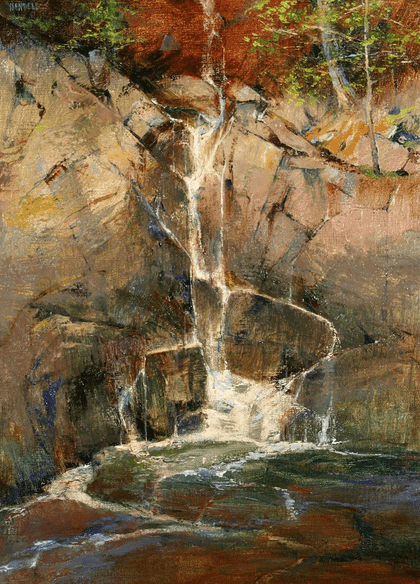
24″ x 18″ – Oils
Here is a wonderful example of how I established the colors of a painting from top to bottom, starting with the light tan Yellow Ocher mixed with Naples Yellow colors at the top of the rock face to the darker greens at the base of the painting before painting anything else. The delicate waterfalls are painted later mostly as a movement (rhythm).
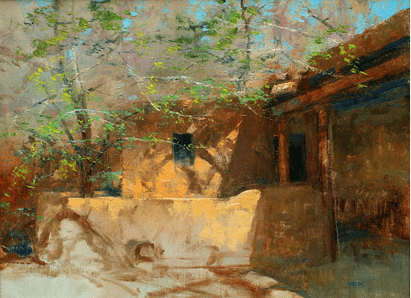
18″ x 24″ – Oil
The send of sunlight was the reason for painting this oil. Here again the leaves are secondary to the whole and was painted as a “rhythm”.
